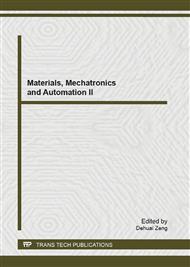p.99
p.105
p.112
p.120
p.128
p.134
p.140
p.146
p.152
Localization and Recognition of Different Vertebra Tissues Based on Eddy Current Detection Method
Abstract:
The spine, which is throughout the trunk, is of great importance to the skeleton structure of human beings. For spine is vulnerable, the rate of spine incident trauma injury is relatively high. In the contemporary technology, the internal fixation prosthetics with implanting pedicle screws is the most efficient way in clinical treatment. However spine internal fixation surgery has many disadvantages like complex in the operation, the high penetration rate and inability to be used in the field battle. As a result, according to the magnetic property difference of different vertebra tissues, an eddy current detection method which is used in localization and recognition of different vertebra tissues to realize the navigation of spine internal fixation surgery is proposed in this paper. A set of improved series-reverse-three coils eddy current sensor is used to test the NaCl solution which electrical conductivity matches that of biological tissue. And the result of several experiments indicates this method can detect the biological tissue with the electrical conductivity no less than 0.5 S/m, which lays a solid foundation to further study of recognition different vertebra tissues.
Info:
Periodical:
Pages:
128-133
Citation:
Online since:
August 2013
Authors:
Keywords:
Price:
Сopyright:
© 2013 Trans Tech Publications Ltd. All Rights Reserved
Share:
Citation:


